
Hace 26 años antes de que naciera mi hija vino el huracán Andrew y arrasó con la Florida
estas son las fotos de mi departamento y mi velero totalmente destruidos con arboles de 500 años de edad. Murio mucha gente incluyendo al hermano de mi jefe y amigo Jose Ramos de Bird Road Mazda, donde trabajé por más de 10 años.
Su hermano era criador de caballos de paso y le encantaban los caballos de paso Peruano, en medio de la tormenta un caballo comenzó a gritar porque le cayo una columna del techo, el hermano de José salió a rescatarlo y otra columna le cayó en la cabeza matándolo.
La vida es muy dura, al igual que el huracán, después que termine la relación con la madre de mi hija por diferencias irreconciliables, ella se llevó a mi hija a Chile y cuando regresó 7 años más tarde, arrasó con todo lo que encontró a mi nombre a su paso, me hizo la vida como si pasó un desastre natural
Hace 25 años en el huracán Andrew. 25 years ago Hurricane Andrew's hit us hard I lost my sailboat 285mph winds
MI PREDICCIÓN SE CUMPLIÓ IRMA SE FUE AL OESTE POR NAPLES Y SUBE POR EL GOLFO DE MEXICO PEGADO A COSTAS DE LA FLORIDA
Hurricane Irma downgraded to Category 3 storm, expected to strengthen to 5 before hitting Florida
Fox Extreme Weather Center: Tracking Irma
Irma makes its way across the Atlantic
Hurricane Irma was downgraded to a Category 3 storm shortly before noon Saturday after its maximum sustained winds weakened to 125 mph, but it was expected to strengthen before moving toward southwest Florida on Sunday.
Trending Articles
The National Hurricane Center said Irma was continuing to slam the north coast of Cuba Saturday but had weakened slightly. As of 2:00 p.m. EDT, the storm was located about 145 miles southeast of Key West, Fla.
The storm's center was expected to pass through the Florida Keys around 8 a.m. ET Sunday. The center said there were threats of brief tornadoes.
The center warned that major hurricane-force winds were expected to in the Florida Keys Sunday morning. The storm was expected to dump about 8 to 15 inches of rain in some areas.
Meanwhile, Florida Gov. Rick Scott warned residents Saturday that the storm surge from Hurricane Irma could "cover your house" and ultimately kill you as he urged Floridians to evacuate immediately.
Scott warned residents that a storm surge of up to 12 feet in places will inundate houses.
"This will cover your house. If you've ever watched how storm surges work, it flows in fast, very fast, and then it flows out. You will not survive all this storm surge," Scott said.
He said the storm is "going to go faster than you are."
Scott said some 25,000 people in Florida have already lost electricity as Irma's outer bands have begun hitting the southern part of the state.
Scott also urged people who have not evacuated to leave immediately.
"If you have been ordered to evacuate, you need to leave now. Do not wait. Evacuate. Not tonight, not in an hour. You need to go right now," the governor said.
Residents in western Florida were told they have until 12 p.m. ET Saturday to leave.
The governor said Saturday that more than 70 shelters were opening. There were currently 50,000 shelters opened in Florida ahead of the storm.
Scott said all members of the Florida National Guard have been deployed ahead of the storm. The governor said 1,000 volunteer nurses were needed to help at disability shelters.
Hurricane Center spokesman and meteorologist Dennis Feltgen said Saturday that while Miami would not get the core of Irma it would get life-threatening hurricane conditions.
Forecasters said the track of the storm was shifting west, unlike previous reports that had the storm hitting southern Florida. The National Weather Service said that damaging winds were moving into the southern part of the state, including Key Biscayne, Coral Gables and South Miami.
The latest forecast track predicts the center of the storm will move along Florida's Gulf Coast through Monday.
Forecasters expected the storm to reach the Keys on Sunday morning and approach the state’s southwest coast by that afternoon.
Cuban officials said the hurricane has damaged crops in the rural eastern part of the country. The extent of the damage was not immediately known. There were no immediate reports of casualties.
Trailing Irma in the Caribbean was Hurricane Jose, which neared Category 5 strength as it followed Irma’s path – posing a threat of further damage to small Caribbean islands that were already devastated by Irma.
Meanwhile, Hurricane Katia made landfall late Friday north of Tecolutla, Mexico, and weakened to a tropical depression, with winds reaching 35 mph.
Irma temporarily regained Category 5 strength late Friday, but weakened to a Category 4 hurricane as it moved over Cuba. The storm downgraded to a Category 3 storm Saturday morning.
In Cuba, Irma lashed the tourist resort areas of the island nation’s northern coast.
In Miami Beach, some residents chose to ride out the storm at home instead of heed Gov. Rick Scott’s orders to evacuate.
“Where am I going to go?" said Kathleen Paca, 56, in a South Beach bar. “It's not going to be that bad. I'm on the second floor and have impact windows. I've thrown coconuts at my windows and they don't break.”
Updated warnings
The hurricane center’s 2 p.m. advisory said that hurricane warnings for the U.S. East Coast were being extended northward to Fernandina Beach.
The hurricane warning for Florida’s East Coast was extended northward to the Flagler/Volusia County line to Chassahowitzka.
A storm surge warning has been extended from Chassahowitzka to the Suwanee River. A storm surge watch has been extended north to Isle of Palms, S.C. Most of Florida's coast was under a storm surge warning.
A tropical storm watch was issued north of Fernandina Beach to Altamaha Sound, Ga., with additional watches and warnings possible later Saturday for portions of the coasts of Georgia and South Carolina, as well as portions of the Florida Gulf Coast.
The center of the storm will move near the north coast of Cuba on Saturday, near the Florida Keys on Sunday morning, and near the southwest coast of Florida Sunday afternoon.
The interaction with Cuba's terrain has weakened the storm slightly but it was expected to strengthen as it moved toward the southwest coast of Florida Sunday afternoon.
Meanwhile, the Environmental Protection Agency said dozens of staff were working to help secure some of the nation's most contaminated toxic waste sites as Hurricane Irma bore down on Florida.
The Florida Keys were expected to receive 10 to 20 inches of rain. A few isolated tornadoes may hit Saturday and Sunday in southern Florida.
The Associated Press surveyed six of the 54 Superfund sites in Florida ahead of Irma's arrival, all around Miami in low-lying, flood-prone areas. AP's journalists found minor issues, such as three unsecured, steel drums in a grassy field containing contaminated soil and water.
The Associated Press contributed reporting to this story.









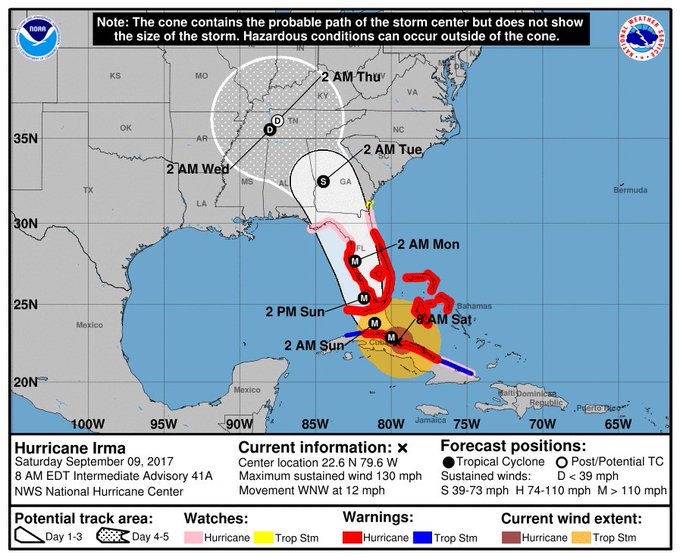
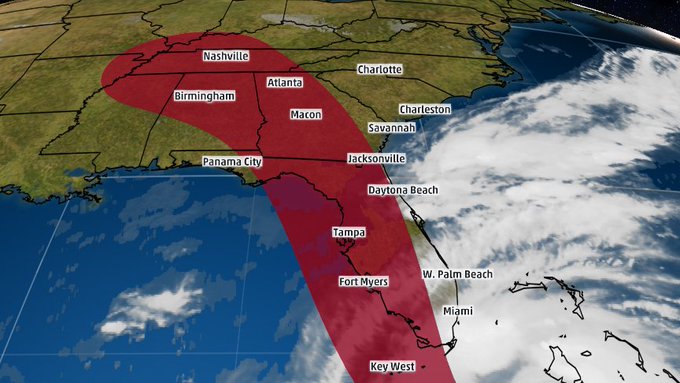

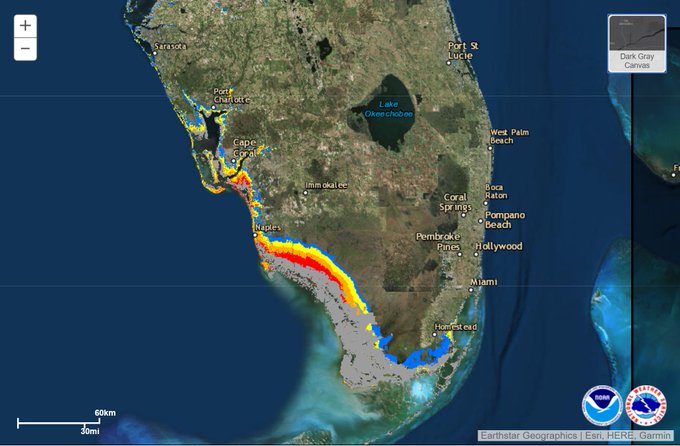
 Looking for information on STORM SURGE? Check out our potential storm surge flooding map:
Looking for information on STORM SURGE? Check out our potential storm surge flooding map: 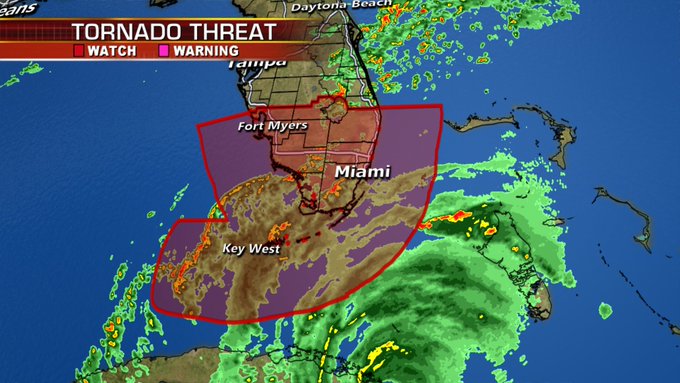
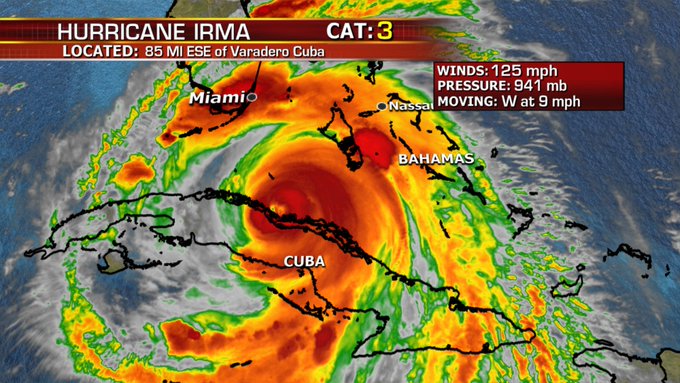
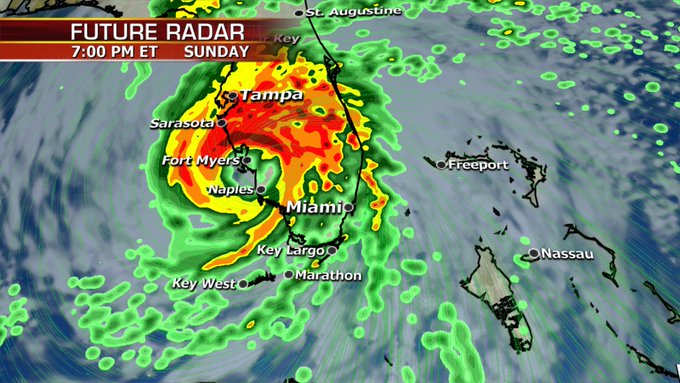
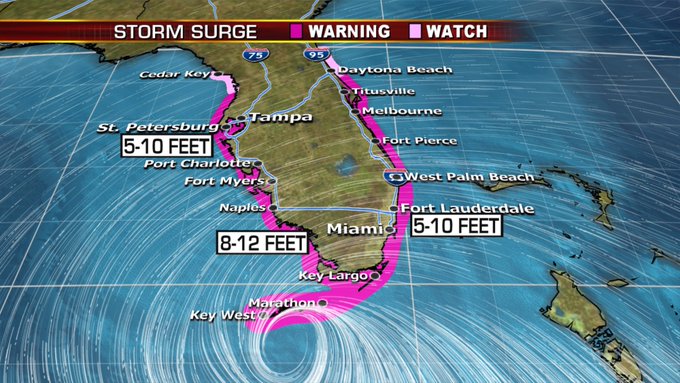
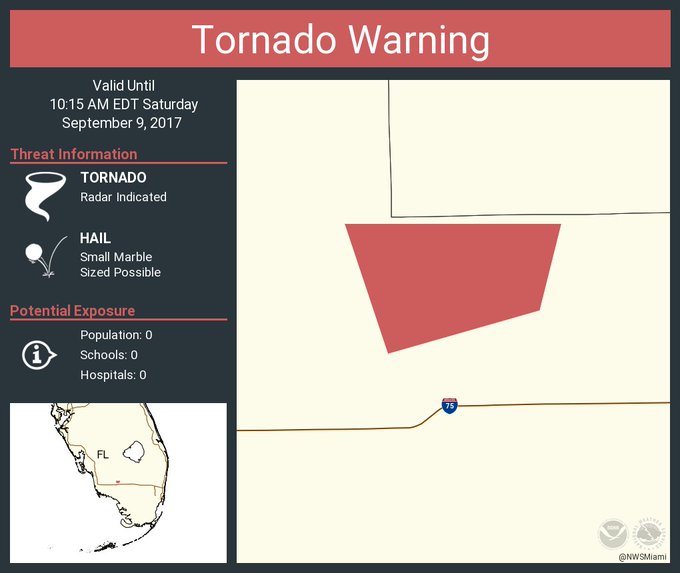
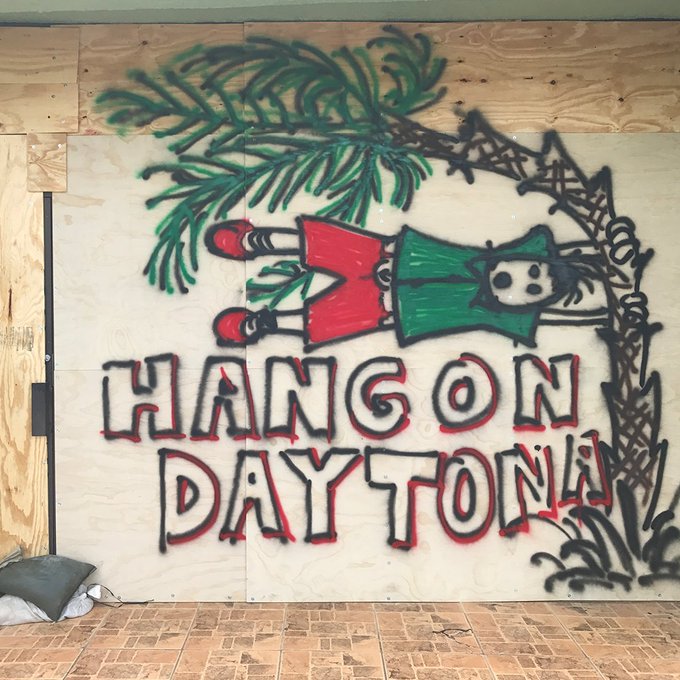
No comments:
Post a Comment